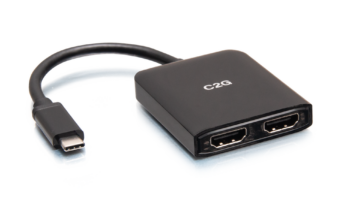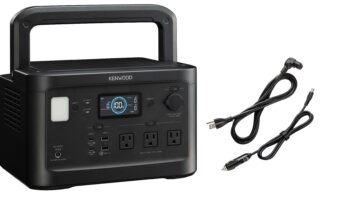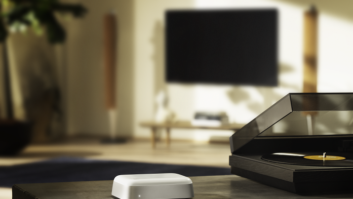Smartphone connectivity, high-resolution audio, and OEM integration play starring roles in Kenwood’s 2016 lineup.
The company is also entering the car ADAS (advanced driver assistance system) market for the first time with a device that combines a dash cam with lane-departure and collision-avoidance sensors.
Among 45 new products, excluding accessories, the company is launching two new head units with combined Apple CarPlay/Android Auto, expanding the selection of such heads to four SKUs. The number of heads with just CarPlay also goes to four from two.
CarPlay and Android Auto enable head-unit touchscreens to display a driver-friendly UI that controls key apps on USB-connected Android and Apple smartphones. They also enable voice control.
Also in smartphone connectivity:
• Android Open Accessory (AOA) expands. All 11 new multimedia receivers, all four new navigation receivers, all 17 new CD-receivers, and three new digital media receivers (DMRs) get AOA. When used with a Kenwood app, the feature enables head units to select music stored on Android 4.1+ phones by title, artist, and album. The heads also display song, artist and album metadata. The feature was available in 2015 only on CD-receivers and DMRs.
• Bluetooth music browsing expands. Thirty new head units incorporate Bluetooth AVRCP 1.5 to select iPhone-stored music by song, artist, genre, composer and podcast. Android-stored music can also be selected by folder, artist and the like.??
The feature appears on multimedia and navigation heads for the first time, not just on CD-receivers.
HDMI: The number of head units with HDMI/MHL connections goes to seven from nine. These heads mirror the display of iPhones and MHL- and HDMI-enabled Android smartphone on the head’s touchscreen, which also delivers various levels of app control in combination with adapter cables. The touchscreens will control all Android apps running on most Android smartphones. Most apps, such as video playback and contacts, are displayed and controlled only when the emergency brake is on and the head unit is wired-in as recommended. Other apps, such as a phone’s music library, navigation and music streaming, are available when the vehicle is in motion. The heads use Bluetooth’s Human Interface Device (HID) profile to control the apps on compatible Android phones.
For the iPhone 5 and later iPhones, the heads and adapter cables enable the display of all iPhone apps and video, but because Apple phones support Bluetooth’s more limited serial port profile (SPP) instead of Bluetooth’s more robust HID profile, the touchscreens won’t control most apps, except for such apps as navigation and music apps. Many apps, including video apps, will be displayed only when the emergency brake is on.
In other key developments:
• Kenwood goes high-res. High-res audio debuts in the 2016 lineup in four eXcelon-series multimedia head units and navigation receivers. They decode 192kHz /24-bit high-resolution Flac and WAV files and feature 192/24 DACs. High-res music can be played from USB sticks, memory cards, and CDs.
• AptX over Bluetooth grows. The fidelity-enhancing technology expands from a handful of heads to 12 new models.
• Tap-to-pair NFC debuts. It appears in six head units.
OEM integration: In OEM integration, the company expanded the number of head units that integrate with a vehicle’s data bus via an iDatalink Maestro module. The module retains factory functions, such as OnStar, when the factory head is replaced. The module works with 13 of the company’s new multimedia and navigation receivers.
Other enhancements in the 2016 line include:
• Dual-phone connection on all Bluetooth-equipped heads, enabling two phones to be paired at one time for hands-free use.
• Android-phone rapid charge on 30 head units, allowing for a compatible Android smartphone to be charged via USB with a 1.5-ampere charge.












